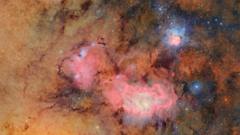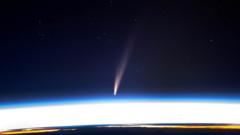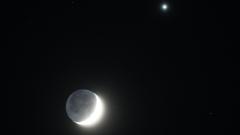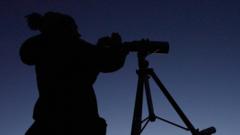The universe has a flair for the dramatic, and this Halloween, it’s not lacking in spectacle! Astronomers have been buzzing about two intriguing black holes making headlines. One, a notorious "serial killer," is on the prowl to consume its second star in a mere five years. The other is part of a fascinating cosmic trio, showcasing a gravitational lineup that was previously thought impossible.
Black holes are the remnants of massive stars that have collapsed under their own gravity, creating areas with gravitational pull so strong that not even light can escape. Our Milky Way galaxy is home to millions of them, with every galaxy hosting a supermassive black hole at its core.
The first black hole, dubbed AT1910qix, was identified five years ago when it unleashed a flare from 215 million light-years away. This event occurred as a star strayed too close to a supermassive black hole, leading to its obliteration over five months! The debris from this cosmic feast has since collided with another star every 48 hours, triggering flashes of X-rays and radiation.
A dedicated team of astronomers, spearheaded by Matt Nicholl from Queen’s University Belfast, has been diligently monitoring these astonishing interactions using advanced space telescopes like Hubble and Chandra. Their findings, which reveal the black hole's dramatic behaviors, were recently published, sparking fascination among space enthusiasts and scientists alike!
Black holes are the remnants of massive stars that have collapsed under their own gravity, creating areas with gravitational pull so strong that not even light can escape. Our Milky Way galaxy is home to millions of them, with every galaxy hosting a supermassive black hole at its core.
The first black hole, dubbed AT1910qix, was identified five years ago when it unleashed a flare from 215 million light-years away. This event occurred as a star strayed too close to a supermassive black hole, leading to its obliteration over five months! The debris from this cosmic feast has since collided with another star every 48 hours, triggering flashes of X-rays and radiation.
A dedicated team of astronomers, spearheaded by Matt Nicholl from Queen’s University Belfast, has been diligently monitoring these astonishing interactions using advanced space telescopes like Hubble and Chandra. Their findings, which reveal the black hole's dramatic behaviors, were recently published, sparking fascination among space enthusiasts and scientists alike!













